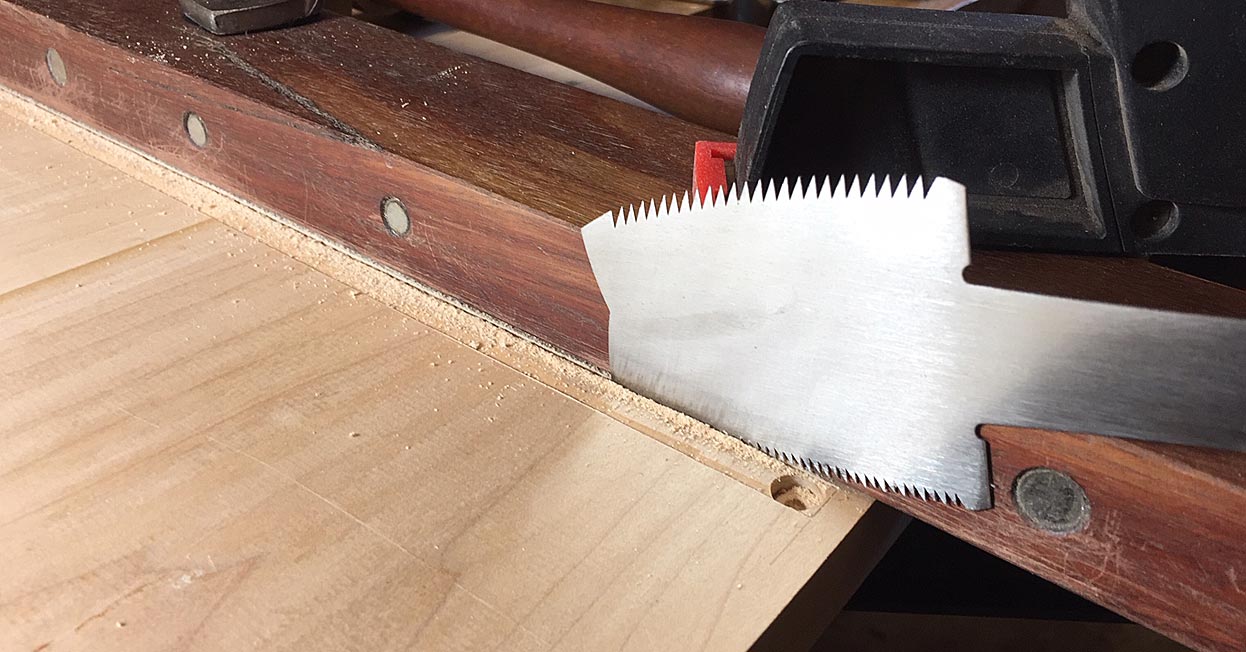
Originally Posted by
Steven Mikes

*update* Thanks all for the advice. I decided to give it a try by hand today. I made a wooden fence with the right angle from a piece of scrap, clamped it to the workpiece and set my saw against it. I don't have a long miter saw like in Derek's picture, best I had for the job was a regular Disston rip saw. I finished one cut this way, but it was miserable. The saw handle hit into the fence before reaching final depth, and the saw was not long enough to reach all the way across that way. Without being able to clear waste out the end, it kept getting clogged in the kerf. I then had to keep alternating cuts from the two sides to be able to reach.
Frustrated, I decided a new tool was definitely in order. I remember reading about azebiki saws and how they can be used for cutting these kinds of long sockets. Went online to find one though and I couldn't. Seem to be all sold out in the US at least, and I'm not willing to wait weeks for an import. So I caved and went to the box store and got a Dewalt compact tablesaw. Set it up on the workbench for now and finished the other side of the socket in no time. I'm not too worried about micrometer tolerances since I have a side rabbet plane and should be able to fine-tune the width by hand after. The thing only weighs 50lb too so I'm planning on hanging it from the garage ceiling when not in use. Hopefully I'll get over the shame of buying another power tool someday..




 Reply With Quote
Reply With Quote










